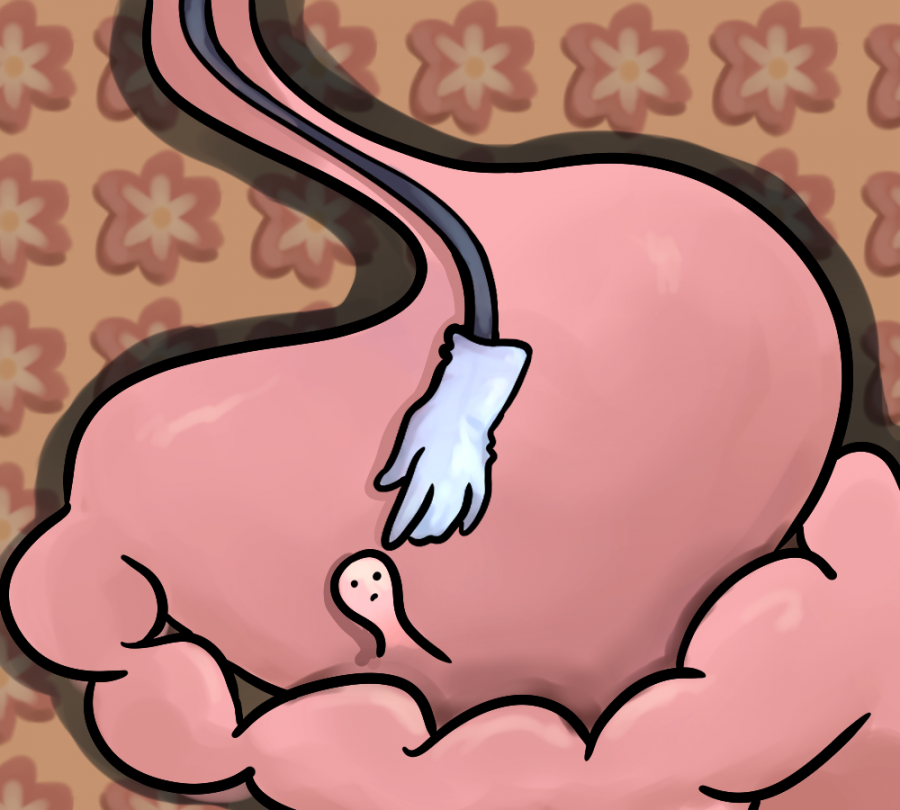UT, MD Anderson Cancer Center researchers developing technology to touch tumors
December 14, 2021
Editor’s Note: This article first appeared in the October 15 flipbook.
Researchers at UT are developing a robotic endoscope that allows doctors to “feel” cancer tumors, which could help doctors detect some cancers earlier and have more precise treatments.
The University and the MD Anderson Cancer Center funded the research in September, which will connect UT researchers and the hospital’s oncologists to develop a tube-like camera that will enter the body to determine the exact location of a colon or stomach tumor without surgery, said Jennifer Lyon Gardner, UT’s deputy vice president for research.
Farshid Alambeigi, a mechanical engineering assistant professor, said the robotic endoscope would provide doctors with information on a tumor’s texture and stiffness. He said tumor cells are harder and stiffer than normal tissue cells, so by touching it doctors can differentiate between a normal cell and a cancerous one.
“You are in a dark room, your eyes cannot see, but what do you do? (You) use your hands,” said Alambeigi, a principal investigator of the project. “For any reason, if they miss detecting the tumor using that front camera, if they touch it they can basically see very tiny tumors that cannot (be) seen with the front camera.”
Dr. Naruhiko Ikoma, a surgical oncologist in MD Anderson who will be leading the clinical trial of the study, said currently surgeons typically open up the whole stomach to locate and take out the tumor. With the robotic endoscope, surgeons could remove tumors surgically without having to search during the procedure. This way, they are more likely to preserve stomach functions.
“As a surgeon, the haptic feedback, or how I feel the tumor, is critical information when we do surgery,” Ikoma said. “For example, when I feel the small bowel or stomach, I can tell where the exact location of the tumor (is) and then make a decision on where to do the surgery.”
Alambeigi said it could take two to three years before the robotic endoscope is ready for testing, and five to six years before it is approved for hospital use.
Ikoma said this technology has the potential to detect other tumors in different parts of the body as well.
“This is quite exciting,” Ikoma said. “This is a great potential solution for those limitations and potentially fill in the gaps we are struggling with and potentially help future patients.”
Gardner said the partnership between the two institutions will provide funding for different projects every year to find better ways to detect, diagnose and treat cancer.
“(The partnership) allows MD Anderson to benefit from access to (UT’s) outstanding basic and translational researchers,” Gardner said. “(This) allows (UT) researchers to benefit from (MD Anderson’s) outstanding clinical researchers and their relationships. … It’s a really great partnership because both sides get a complement to the research that they do.”
Colon cancer is the third most common cancer diagnosis for men and women, according to the Centers for Disease Control and Prevention. Stomach cancer is the third most deadly cancer, according to the National Center for Biotechnology Information.
“I always tell my students, ‘Don’t forget, this is a realistic need. It’s not just some, like, mobile robot for fun, you make it and then it does something,’” Alambeigi said. “If you can help people with this technology, that’s amazing.”



